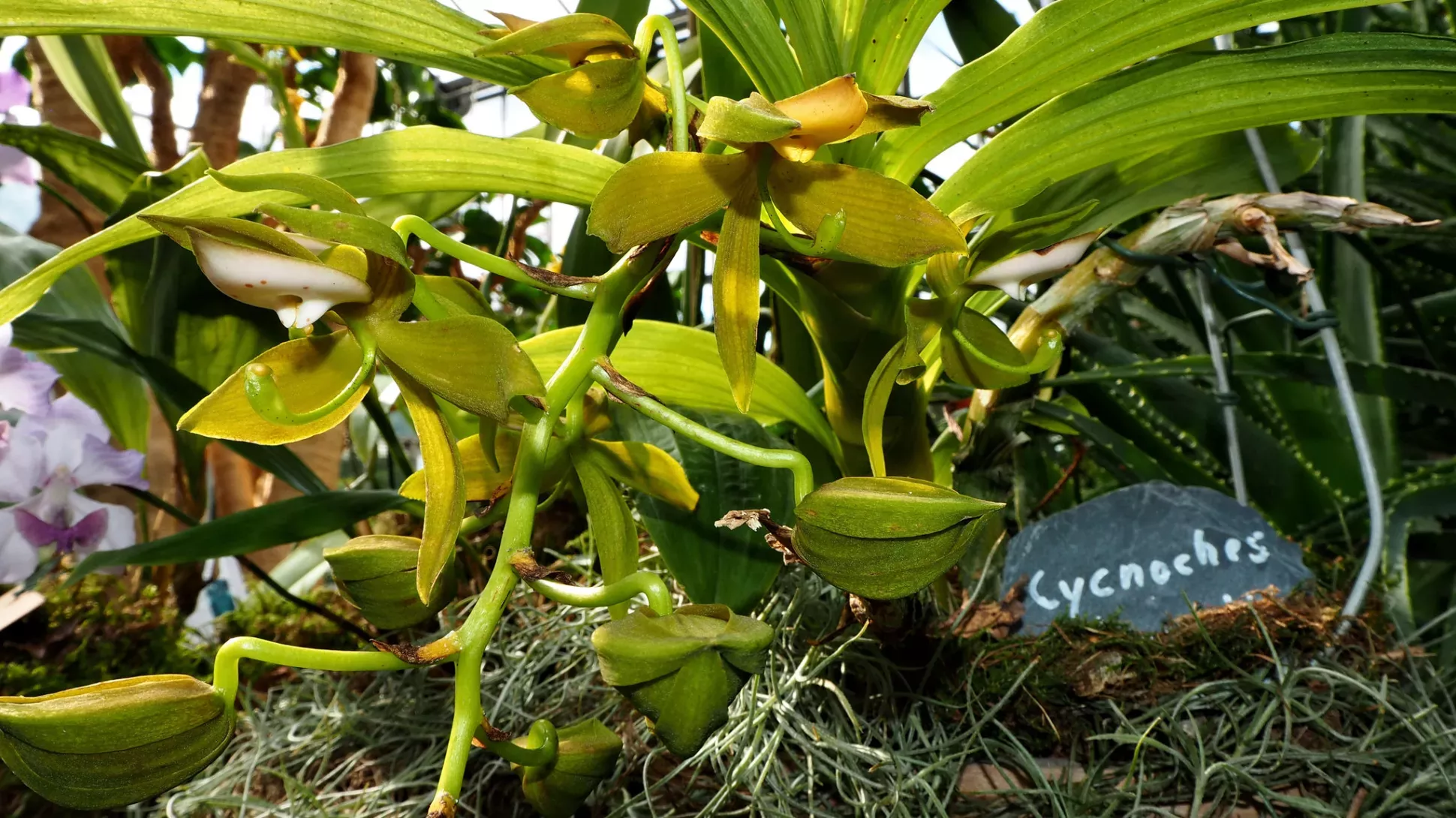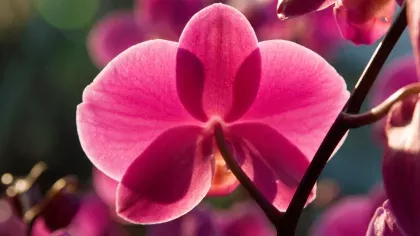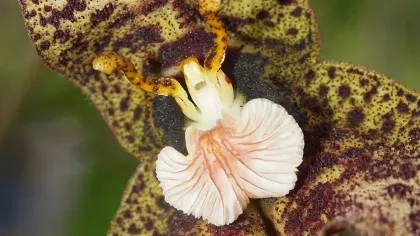28 February 2022
Exploring the orchid family tree
Kew scientists are mapping out some of the weird and wonderful branches of the orchid family tree.

Orchids are an incredible evolutionary success story in the plant world.
They are found on every continent on the planet, in almost every habitat, and even found north of the Arctic Circle.
In fact, there are nearly three times as many orchid species as there are species of birds alive in the world today.
That is why scientists at Kew are working to build a family tree of orchids, to understand more about how the wide variety of orchid groups are related.

Growing an orchid family tree
To understand how scientists are building the orchid tree of life, it is important to understand how plants are categorised.
Around 28,000 species of orchids have been identified as new to science. These are broken down into around 850 small groups, each called a genus.
In the past, scientists would use the shape, colour, and other characteristics of plants to classify them into different groups. While this is still a useful technique, it can get tricky when similar features appear in completely unrelated plants.
DNA is incredibly useful, as it provides scientists with even more evidence to help them understand how plants are related to each other
Our scientists at Kew want to sample the DNA of at least one orchid from each genus.
Specimens will be taken to the labs and a small piece of plant tissue will be removed to sample the DNA.
Once the DNA is sampled, the scientists can compare DNA from different orchid species — the closer they match, the more closely related the species.

Pint-sized perfumers
Mapping out the orchid family tree allows scientists to understand more about some of the unique species that make up its branches.
One of reasons orchids are such a successful family of plants is the wide variety of tricks they employ for successful pollination. Sneaky orchid pollination strategies include nectar rewards, deceptive flowers, and even spring-loaded traps.
But some orchids offer a different incentive for pollination: a sweet-smelling perfume.
Orchids from two groups, Stanhopeinae and Catasetinae, produce fragrant chemicals that attract male Euglossini bees, better known as orchid bees.
Orchid bees have specialised brushes on their front legs, and chambers on their hind legs. The brushes collect the fragrant chemicals from the orchids, and deposit them into the chambers.
It is thought that male bees collect these fragrant chemicals to make themselves more attractive to a prospective mate.
When the orchid bees come to collect their perfume, they get covered in sticky packets of pollen known as a pollinium. When the bee then visits another orchid from the same species, it inadvertently pollinates the flower.
Some orchids are entirely dependent on bee orchids for pollination. In turn, some orchid bees can only successfully find a mate using chemicals from specific orchid species.

Walking on sunshine
One of most interesting branches of the orchid family tree is the genus Cycnoches, better known as swan orchids.
Found throughout Central and South America, swan orchids rely on orchid bees for pollination. But there’s something even more curious about their flowers.
Whilst most orchids have both male and female parts on the same flower, swan orchids produce separate male and female flowers.
What is even more incredible is that these flowers can grow on the same orchid plant, depending on how much sunlight in receives.
It is thought that light intensity plays a role in whether a flower will be male or female — more exposure to sunlight and higher temperatures will cause a female flower to develop, with less light usually resulting in a male flower.

Protecting what is known
By mapping out the branches of the orchid family tree, it helps us to better protect those species that are at risk.
Orchids are threatened around the world by habitat loss, climate change and overcollection.
The orchid tree of life project, and projects like it, help us to predict how species will respond to future environmental change, and what risks they might face in the future.
Many of the species named new to science in 2021 are already considered endangered, but naming them to science is the first step toward protecting them.
So, mapping the orchid family tree will give us the knowledge we need to protect some of the weird and wonderful orchid species around the world.



